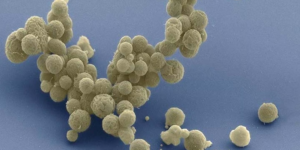How small a canvas can evolution work on? Scientists have experimented with a synthetic lifeform designed to have the simplest possible genome, and found that given the chance it can evolve lost fitness back, showing that indeed, “life finds a way.”
Simple or complex, if you put an organism in an environment evolution will get to work improving it. But is there a lower limit to that? If a lifeform has a genome consisting of just the essential genes, does that leave enough wiggle room for evolution to experiment? Or is it too risky that any minor change could kill the organism? Researchers at Indiana University Bloomington wanted to find out.
UK & Spain call on Biden to not send cluster bombs to Ukraine
To do so, they turned to a synthetic lifeform with the simplest genome of any known organism. It was originally derived from a natural microbe known as Mycoplasma mycoides, which already had a very small genome of just 901 genes. In 2016, researchers stripped it down to the absolute bare necessities, containing under 500 genes – in comparison, E. coli have a genome of over 4,000 genes. More recently, other scientists have experimented with putting some genes back in to let the synthetic cells divide or move around.
Read more: New Atlas
Ask me anything
Explore related questions





